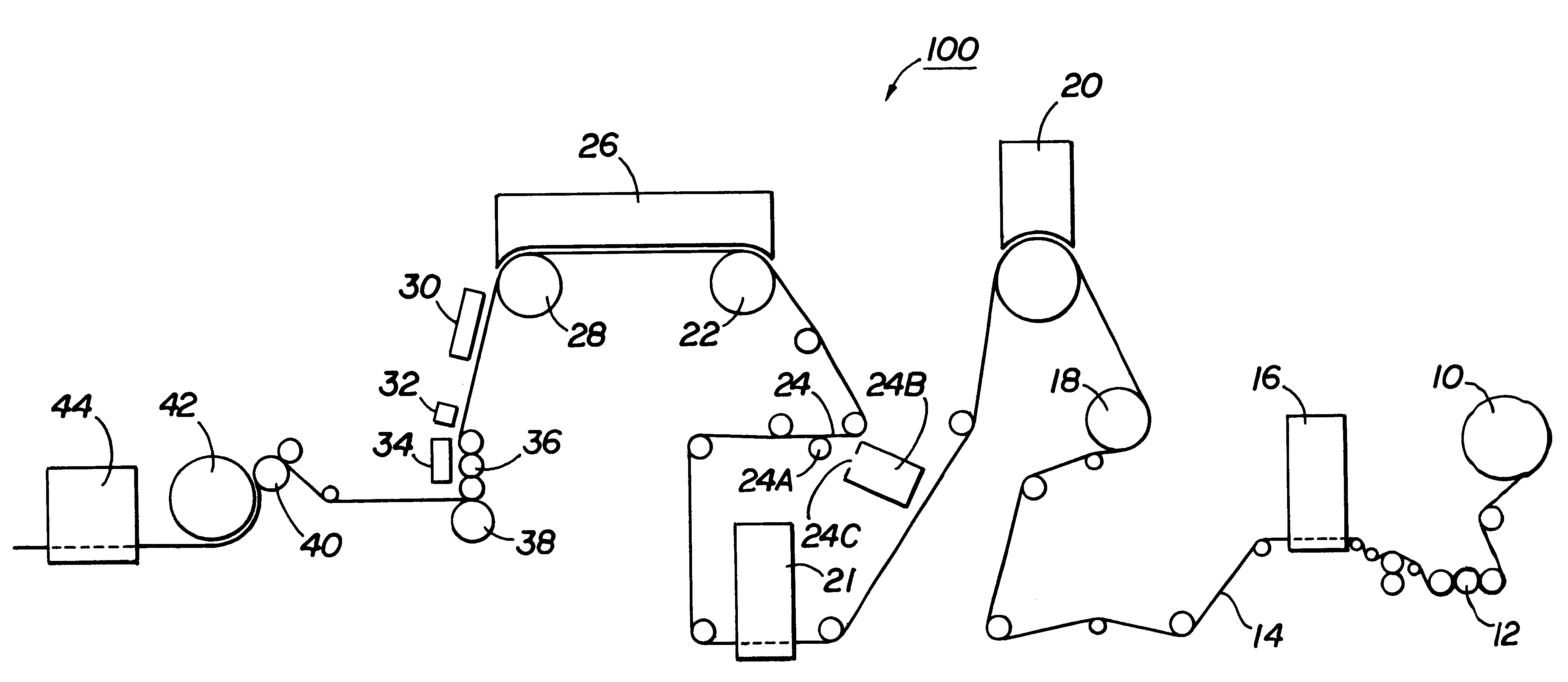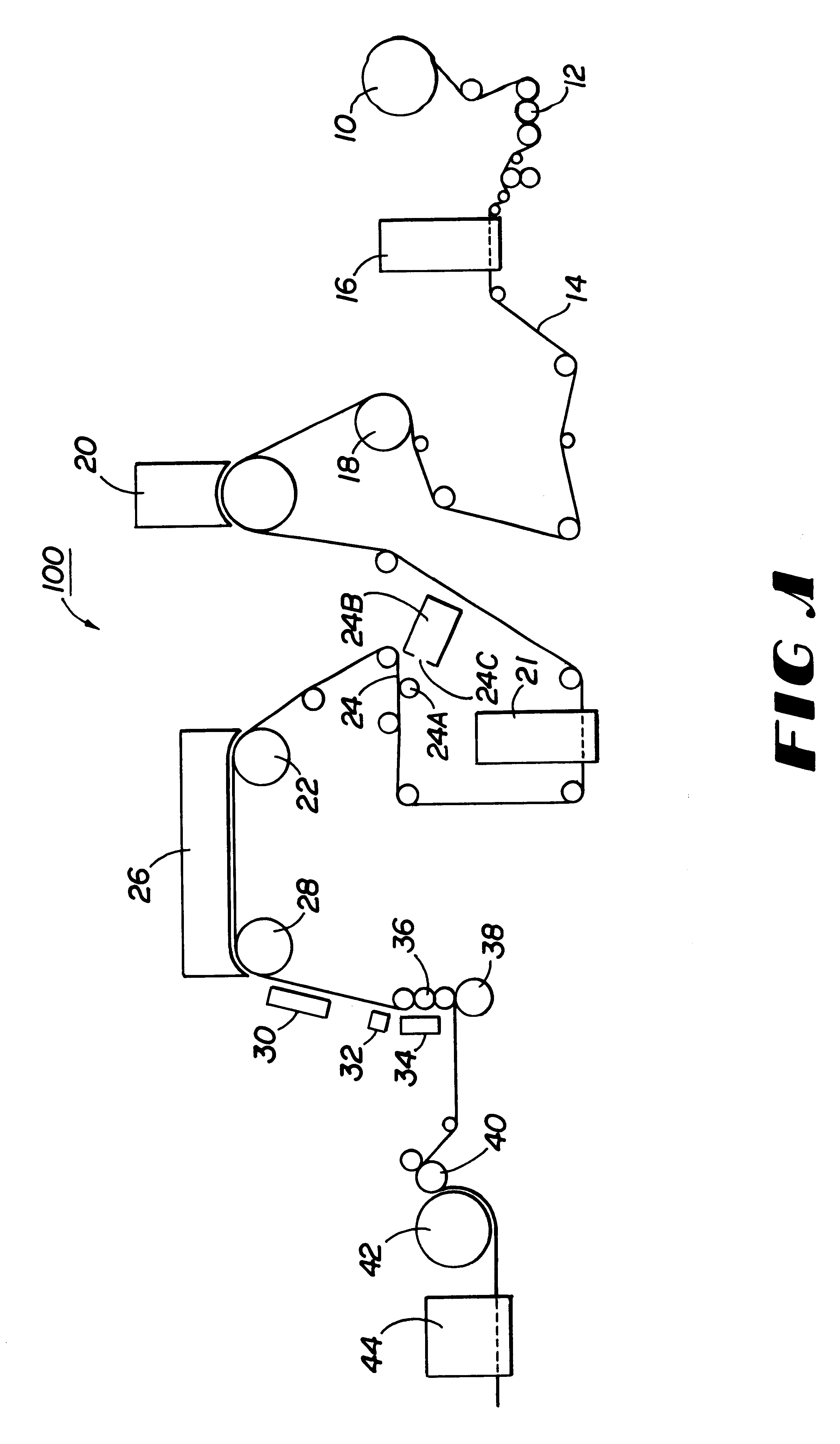Paper coating apparatus
a technology of coating apparatus and paper, which is applied in the direction of paper coating, coating, papermaking, etc., can solve the problems of paper unrecyclable, unrecyclable paper, and high cost of wax coating process
- Summary
- Abstract
- Description
- Claims
- Application Information
AI Technical Summary
Benefits of technology
Problems solved by technology
Method used
Image
Examples
example ii
In order to further demonstrate the dramatic advantages achieved by the combination of air knife coating paperboard with a water-dispersible polyester after flame treating the paperboard in accordance with the present invention, a further test was conducted wherein the MVTR of PET coated, flame-treated paperboard and PET coated, unflame-treated paperboard was measured. The flame treatment of the paperboard resulted in a surprising 60% reduction in MVTR versus the paperboard that is not flame treated. Specifically, while coated paperboard that was not flame treated exhibited an MVTR of 5.4, a flame treated paperboard coated with the same coating exhibited an MVTR of 2.2. This is attributed directly to the flame-treatment of the paperboard prior to coating and the resulting removal of surface fibers and debris.
example iii
The recyclability of paperboard coated with polyethylene terephthalate (PET) of this invention was tested. The PET was applied at the rate from approximately 0.75 to 2.0 dry pounds per MSF. Handsheets were prepared of both uncoated and a combination of 10% coated and 90% uncoated to replicate actual recycling percentages of coated and uncoated board. The handsheets were tested in accordance with the Fiber Box Association Voluntary Protocol and passed the recyclability test with the following results:
In order to be certified under the Fiber Box Association Voluntary Protocol, treated materials must exhibit handsheet slide angle values within 10% of the value obtained for the untreated control. The slide angle for the combination of coated board and uncoated board was well within that 10% value.
example iv
A water dispersible polyethylene terephthalate (PET) was applied by an air knife to a roll of paperboard that had been preheated and flame treated prior to the application of the PET at a rate from approximately 0.75 to 2.0 pounds per MSF. The coated paperboard was heated and then cooled to at least 160.degree. F. This paperboard was tested for repulpability and recyclability.
The pulping of the sample was carried out a bench scale using the following conditions:
Consistency: 1.0%
Temperature: 130.degree. F.
pH: ambient (approximately 7)
Water hardness: 100 ppm (adjusted with CaCl.sub.2)
Time: 10 minutes (30,000 revolutions in British Disintegrator)
The sample yielded the test results set forth in the table below:
subtracted, so the more accurate values will be slightly larger.
This sample produced a very low quantity in screen rejects. Only the material that passes through the screen is suitable for recycling into recycled paperboard. It will be appreciated that there are advantages to coat...
PUM
| Property | Measurement | Unit |
|---|---|---|
| metering angle | aaaaa | aaaaa |
| angle | aaaaa | aaaaa |
| air pressure | aaaaa | aaaaa |
Abstract
Description
Claims
Application Information
 Login to View More
Login to View More - R&D
- Intellectual Property
- Life Sciences
- Materials
- Tech Scout
- Unparalleled Data Quality
- Higher Quality Content
- 60% Fewer Hallucinations
Browse by: Latest US Patents, China's latest patents, Technical Efficacy Thesaurus, Application Domain, Technology Topic, Popular Technical Reports.
© 2025 PatSnap. All rights reserved.Legal|Privacy policy|Modern Slavery Act Transparency Statement|Sitemap|About US| Contact US: help@patsnap.com



